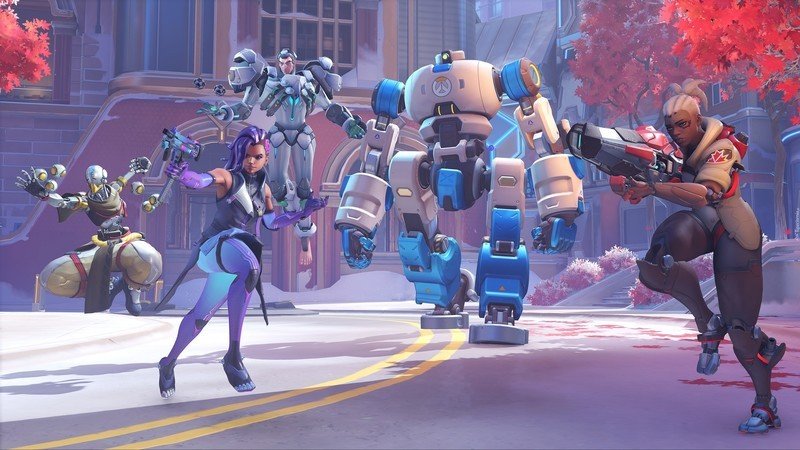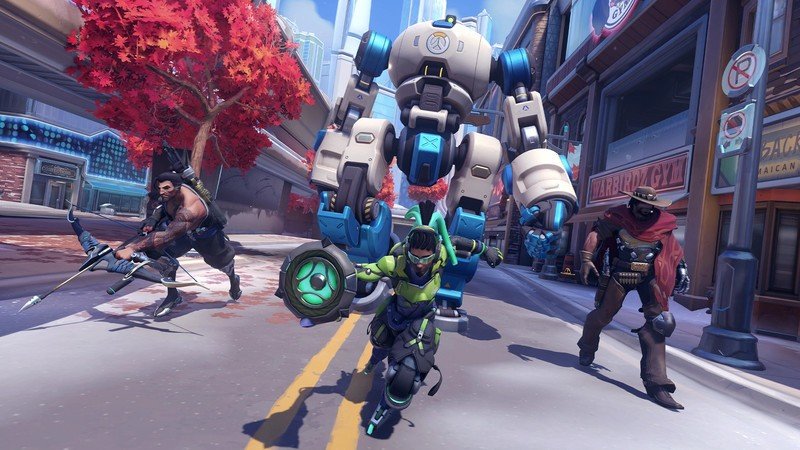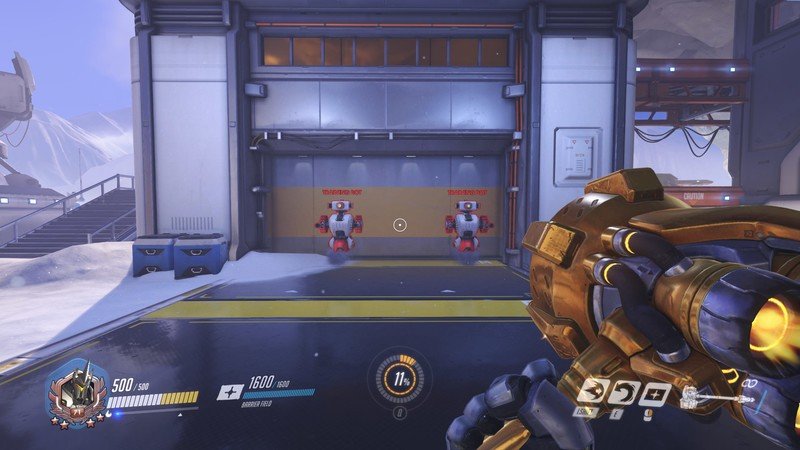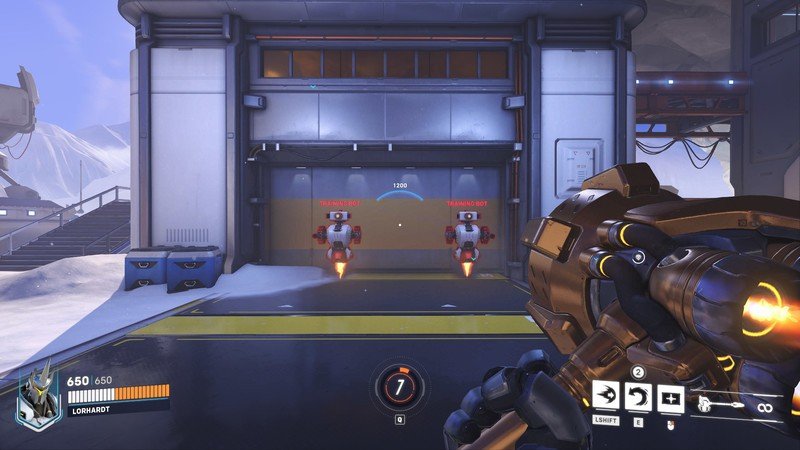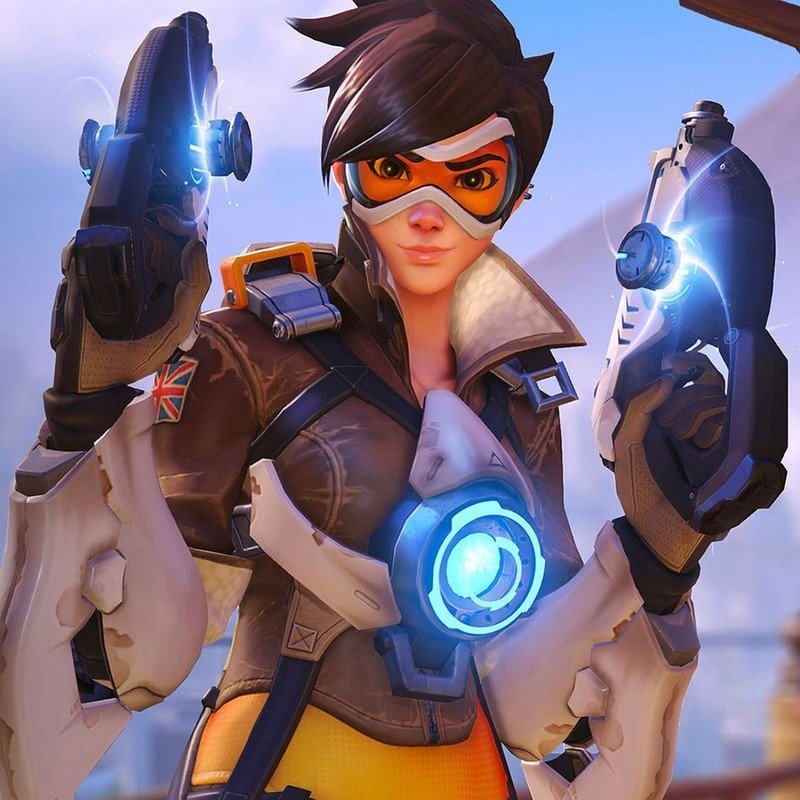Overwatch desperately needed change, and Blizzard delivered.
When Blizzard’s ambitious 6v6 hero shooter Overwatch released back in 2016, I instantly fell in love. Its stylish visuals and wide variety of unique and charming characters drew me in, and I regularly played the game for two years as Blizzard added maps, game modes, quality-of-life features, and heroes.
However, Overwatch’s gameplay direction started taking a controversial turn starting in 2018 with the release of support Brigitte. The game became driven by abilities that could stun enemies, and while these were always a part of Overwatch, the fact that almost every hero added after launch had one or more of these moves meant that they were a constant nuisance.
On top of that, many tank combinations became annoying to play against since they could work together to clog up Overwatch’s maps with barriers and other damage mitigation abilities. These developments resulted in slow, sluggish matches that mostly consisted of trying to break tank shields and seeing which team could spam crowd control more effectively. The game became stagnant and bland, and as time passed, it was clear that something needed to change.
Last year, Blizzard confirmed that to address these issues, Overwatch 2 — an upcoming massive overhaul for Overwatch with radical balance changes, new visuals, an optional paid PvE campaign, and more — would be moving to a 5v5 format with one less tank hero on each team, accompanied by a widespread reduction of crowd control moves. At the time, I wrote about why I felt this was a good move, and now that I’ve had a chance to play the Overwatch 2 beta, I stand by it. The beta’s implementation of these changes, as well as new additions like the Push game mode and the new hero Sojourn, has me excited about Overwatch’s future.
The gameplay evolution Overwatch needed
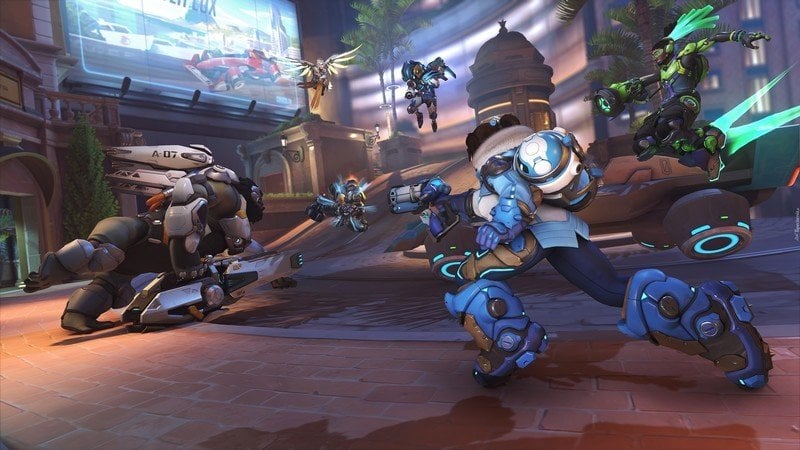 Overwatch combat in the 5v5 era.
Overwatch combat in the 5v5 era.
What has stuck out to me the most about the Overwatch 2 beta is how liberating it feels. With one less tank on each team, there’s much more space on the map for both teams to take advantage of while jockeying for positioning or attempting to flank, resulting in combat feeling more fluid and dynamic. Blizzard has also significantly reduced the number and potency of stun abilities, which makes the game much less frustrating to play in general. Whereas the original Overwatch has become a repetitive, grueling war of shield and crowd control attrition, the moment-to-moment gameplay of Overwatch 2 is full of energy and excitement.
Overwatch 2’s changes make combat more fluid and dynamic than ever before.
You may think tank players have been left out to dry with the move to 5v5, but as a tank main, I actually think the role is more fun than ever. Blizzard has buffed or reworked most of the game’s tanks with additional health and longer ability uptimes, making them more individually powerful than they ever were in the original Overwatch. Tanks now globally resist incoming knockbacks and charge enemy Ultimates less when damaged as well, ensuring that players won’t be displaced or act as an “ult battery” when playing the role. Damage and support heroes get a special role passive effect, too. Damage heroes move slightly faster than other characters, while support heroes can auto-heal after not being damaged for a few seconds.
Like tanks, damage characters also feel more powerful now that there’s only one tank that can mitigate their damage. The speed boost from the damage passive makes flanking or getting to high ground much easier, and since there aren’t as many stuns in the game, you can play more aggressively than you could before.
Many of the game’s support heroes are more difficult to play as a result of both this and the absence of a second tank, though many of them are capable of either going toe-to-toe with damage heroes or avoiding much of their damage if you play skillfully. The support role passive also makes it easy to heal up between engagements, preventing enemies from whittling you down over time.
To help several characters remain viable in the new 5v5 format, the developers have rolled out several hero reworks and other large balance adjustments in Overwatch 2. For example, Bastion can now temporarily roll around like a tank while using their devastating minigun, and Orisa’s defensive shield and “Halt!” displacement ability has been replaced with a javelin that Orisa can throw at opponents or spin rapidly in front of her to nullify damage and push into enemy positions. Brigitte’s Shield Bash, once known as one of Overwatch’s most obnoxious stun abilities, has been transformed into a mobility-focused one that helps her close the distance and initiate fights.
More changes and tweaks are still needed — support heroes in general could use a bit of a buff, and the new Orisa and Doomfist are pretty busted — but in general, Blizzard has done an excellent job of moving Overwatch to the new format.
Push might be Overwatch’s best mode yet
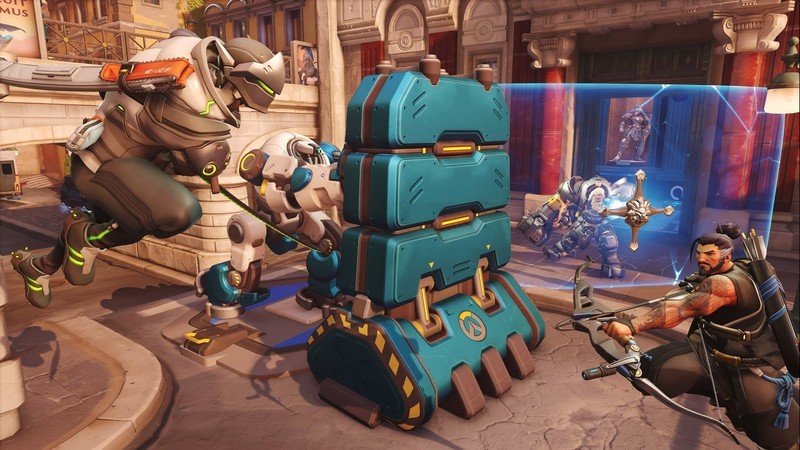 Two teams battle over the objective-pushing robot in Push.
Two teams battle over the objective-pushing robot in Push.
Overwatch 2’s premier new game mode is Push, which has both teams fight over a large payload-like robot that pushes an objective barrier into enemy territory whenever your team controls it. To win a Push match, your team needs to push the objective farther into enemy territory than the other team pushes into yours (you also win automatically if you push the objective all the way to your opponent’s home base). If you’ve ever played Team Fortress 2, it’s a lot like the Payload Race mode.
After playing it for several hours during the beta, it’s possible that this might be my new favorite mode. The constant back-and-forth of switching between offense and defense as control of the robot changes complements the dynamic nature of Overwatch 2’s 5v5 gameplay. On top of that, the two Push maps included in the beta are well-balanced and accommodate all playstyles well with plenty of high ground, open sightlines, tight close-quarter areas, and flank routes. The giant robot that pushes the objective is adorable and charming, too, breaking up the intensity of the game mode with its exaggerated animations and humorous voice lines. I’m looking forward to playing it more as the beta continues.
A satisfying presentation overhaul
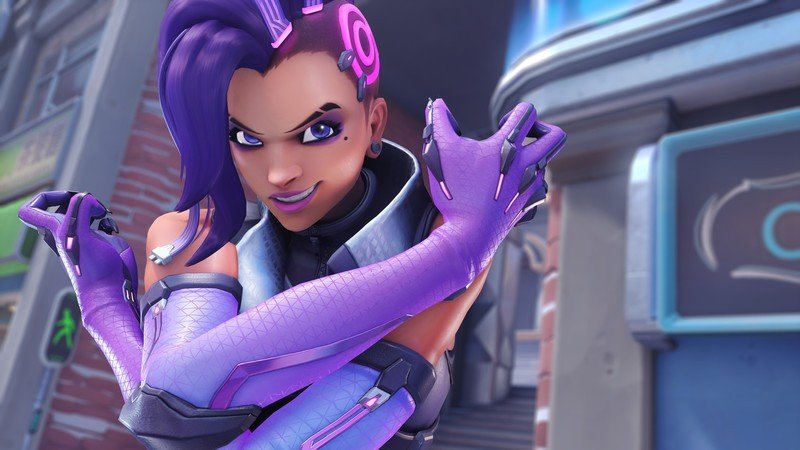 Sombra, like all of Overwatch’s heroes, has a new look in Overwatch 2.
Sombra, like all of Overwatch’s heroes, has a new look in Overwatch 2.
The Overwatch 2 beta also gives fans a taste of the visual and audio improvements coming with the full release. While Overwatch’s graphics have aged well since its 2016 release thanks to its stylized art direction, the sharper textures and vibrant lighting effects added in Overwatch 2 help elevate the game to modern standards. You shouldn’t expect to have your mind blown, but the upgrade is nevertheless appreciated.
Even more impressive than Overwatch 2’s visual enhancements is its updated sound design. Everything still sounds like the Overwatch that fans know and love, but hero weapons and abilities have punchier sound and all audio across the board has more realistic echo and reverb effects. These changes make each hero’s arsenal more satisfying to use, enhancing the already-potent power fantasy that Overwatch’s heroes are known for.
The Overwatch HUD (left) and the Overwatch 2 HUD (right).
Overwatch 2 also introduces a ping system, allowing players to quickly flag enemy locations or ask their teammates to group up, attack, or defend at a specific location. This communication option is fantastic for situations where the voice chat is cluttered with other callouts, and it’s also valuable for players that aren’t comfortable with using a microphone.
The UI and HUD have also been given a minimalist visual overhaul that I have mixed feelings about. On one hand, I understand the desire to make things as readable as possible, especially since this is a competitive shooter. On the other, the original Overwatch UI didn’t need many improvements. If it ain’t broke, Blizzard, why fix it?
With that said, there are some elements I appreciate about the new HUD, such as an indicator that shows which hero you’re healing while playing Mercy or Reinhardt’s shield health indicator being moved towards the center of the screen. Since Overwatch 2 is in beta, it’s also possible that Blizzard plans to add more style to the UI and HUD at a later date.
Final thoughts
I’ll admit that I had my doubts when Blizzard announced Overwatch 2, but after playing the beta, I’m convinced that the developers are moving in the right direction with Overwatch. This is the most excited I’ve been for the game in several years, and between its excellent new 5v5 format, fantastic Push mode, and snazzy visual, audio, and UI improvements, Overwatch 2 truly feels like a new game in some ways. I strongly recommend downloading the Overwatch 2 beta and giving it a try yourself (you’ll need a copy of the original game).
There’s still work that needs to be done. A handful of the heroes Blizzard hasn’t tweaked or reworked yet feel awkward in the 5v5 format, and I wish the UI and HUD had some more style. With that said, Overwatch 2 has made a terrific first impression, and I wholeheartedly believe that Overwatch has the potential become one of the best Xbox shooters again with this new direction.
Get the game
Overwatch
$40 at Best Buy (PC)
$40 at Amazon (Xbox)
$60 at Xbox Store (Xbox)
The cavalry’s here!
Overwatch is a competitive team-based shooter set in a futuristic world of cybernetics and robotics. All of your progress and cosmetics from Overwatch will carry forward into Overwatch 2, and you’ll also need the game to be able to play the Overwatch 2 beta.

